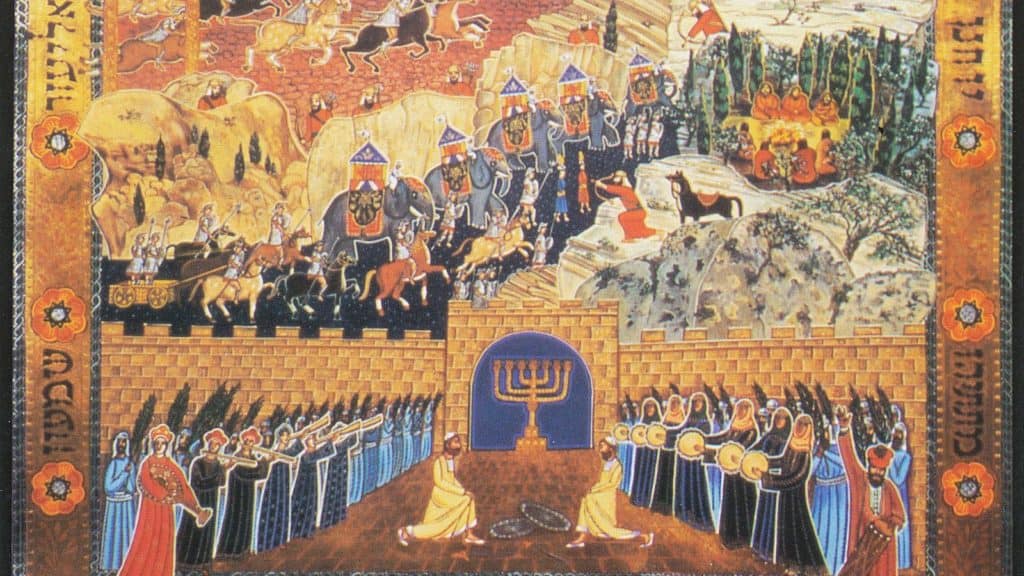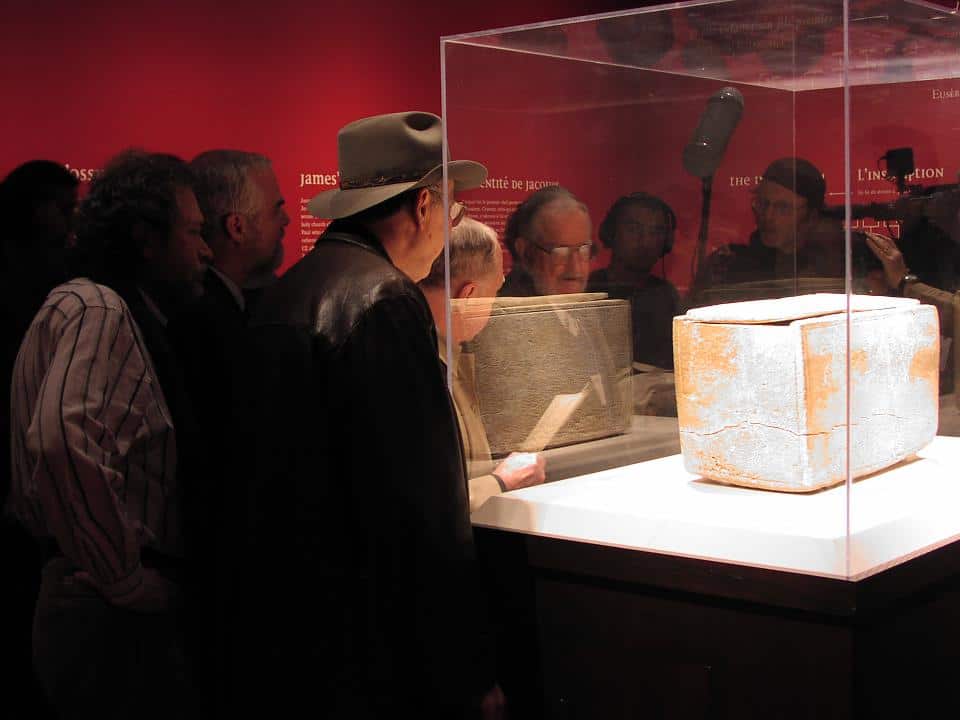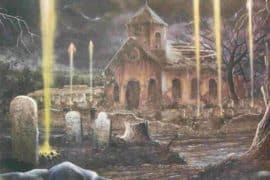Daniel chapter 11 might well be the longest “continual” prophecy in the Hebrew Bible. Indeed, it appears to be referred to in Daniel 10:21–the chapter leading up to the Daniel’s most disturbing vision–as the “book of truth.” It is surely one of the most influential in terms of firing up apocalyptic visions and expectations through the centuries among Christians and Jews. In that regard I think the case could be made that it is the most influential text of the Hebrew Bible in terms of its interpretive spinoffs. What is it about this text that has been so engaging for literally thousands of prophetic interpretations over the ages–especially among Christians–and led to countless disappointments and dashing of expectations?

It all has to do with the obvious historical fulfillment laid out in 11:1-35–a complex but quite accurate detailing of events from Alexander the Great to Antiochus Epiphanies in 165 BCE! It reads like a cryptic version of the “morning newspaper,” truly “history in advance,” as prophetic interpreters often put such things. For a breakdown of this section see Lawrence M. Mill’s excellent summary article, “The Lead up to Chanukah in the Book of Daniel.”
If the prophecy ended with v.39 all would be well. However, the events that follow in vv. 40-45, that in fact lead up to the “great tribulation” and the “end of the age,” including the resurrection of the dead–never happened! At first these verses, which describe an arrogant king who will exalt himself above every god, seem to be a redux of Antiochus Epiphanies. However, neither the language nor the activities of this “final evil figure” fit Antiochus IV or the Maccabean revolt.
Dan. 11:40 “At the time of the end the king of the south shall attack him; but the king of the north shall rush upon him like a whirlwind, with chariots and horsemen, and with many ships; and he shall come into countries and shall overflow and pass through. 41 He shall come into the glorious land. And tens of thousands shall fall, but these shall be delivered out of his hand: Edom and Moab and the main part of the Ammonites. 42 He shall stretch out his hand against the countries, and the land of Egypt shall not escape. 43 He shall become ruler of the treasures of gold and of silver, and all the precious things of Egypt; and the Libyans and the Ethiopians shall follow in his train. 44 But tidings from the east and the north shall alarm him, and he shall go forth with great fury to exterminate and utterly destroy many.
Scholars usually dismiss this section as the unfounded speculation of the author or authors, living in the Maccabean period, but before the liberation of the Temple from the forces of Antiochus in 164 BCE. For example, my Oxford Annotated RSV has the note: “None of these predictions was fulfilled.” This would include the various calculations of chapter 12 regarding periods of 1260, 1290, and 1335 days.
However, pious believers in the inspiration of the book of Daniel–even though it was relegated to the “Writings” and not put with the Prophets in the standard arrangement of the Hebrew Bible or Tanakh–would never take such a position. To quote Jesus in the gospel of John, “Scripture can not be broken (John 10:35)–to the Bible must be true! The obvious implication is that these mysterious verses will come about in the last days–as a sort of parallel repeat of an Antiochus-like figure–a final evil ruler, often called the “Antichrist” will appear on the scene, just before the End of the Age. Antiochus was just a “type” of this final evil ruler.
The famous Aramaic “Son of the Most High” text (4Q246) in the Dead Sea Scrolls, though often misapplied to the Davidic Messiah, is about just such an evil ruler, as David Flusser and others have made clear. Josephus says that it was this expectation, drawn from what he calls “an ambiguous oracle found in their sacred scriptures,” that most led the Jews to revolt in 66-73 CE (Jewish War 6.310-314). Mark, the earliest New Testament gospels, written close to the same time, puts in the mouth of Jesus the same sort of speculation–that clearly was intended to apply to the events surrounding 70 CE and the destruction of the city of Jerusalem and its magnificent Temple (Mark 13:14):
But when you see the desolating sacrilege set up where it ought not to be (let the reader understand), then let those who are in Judea flee to the mountains; 15 let him who is on the housetop not go down, nor enter his house, to take anything away; 16 and let him who is in the field not turn back to take his mantle. 17 And alas for those who are with child and for those who give suck in those days! 18 Pray that it may not happen in winter. 19 For in those days there will be such tribulation as has not been from the beginning of the creation which God created until now, and never will be. 20 And if the Lord had not shortened the days, no human being would be saved; but for the sake of the elect, whom he chose, he shortened the days.
The writer clearly views Vespasian (assisted by his son Titus) in the role of the a final evil “Antiochus-like” figure, and they do indeed “set up the desolating sacrilege” dedicated to Zeus, and stop the Temple sacrifices as predicted in Daniel 11:31-34. That these verses refer to Antiochus in the 2nd century BCE was not a problem for them–since v. 35 says the vision “is yet for the time appointed,” thus placing a “gap” between the time of Antiochus and the final one who is to come.
Paul clearly has Daniel 11 in mind when he tells his Corinthian followers that it is best to not marry or go into business or make any kind of “worldly” plans since the “appointed time of the end has grown very short” (1 Cor 7:29). A bit later, Paul (or one of his followers) says the same in 2 Thessalonians 2:1-5, namely that the “Day of the Lord” will not come until this “man of sin” sits in the Temple of God claiming to be god, exalting himself above every other god or object of worship” quoting directly the language of Daniel 11:36-37).
The book of Revelation picks up on the same themes with a final “Beast” power who will hold sway over the entire world, forcing worship of himself rather than God (Rev 13:5-10). Apparently contemporary Christians applied this first to Nero (whose Gematria number in Greek and Hebrew works out to 666), and subsequently to Domitian.
But that was just the beginning. The last chapter of the Didache picks up on the same precise language of the “world-deceiver manifesto as a son of God” (16:30). One can document literally dozens and dozens of subsequent apocalyptic interpretations, applied to this or that political ruler or set of or events, sometimes taken rather literally–other times figuratively– for the next 2000 years, from the 2nd century, though the Middle ages and turn of the Millennium, to the 17th century apocalyptic craze, down to our own day with speculations about Hitler, Saddam Hussein, or more recently a revived Muslim Caliph. One can find an intense interest in these of ideas. The numbers of Daniel 12, understood as “years” rather than “days,” gave rise to endless calculations stretching from the Roman period down into modern times. Indeed, these ideas and expectations are at the heart of a massive resurgence in what is called “Bible Prophecy” among fundamentalist evangelical Christians–filling the pulpits, the internet, and the television and radio waves with their latest dire predictions of the imminent rise of just such a figure. All eyes are once again on the “Middle East,” where these events will once more pay out for a final time.
So what this means is that Hanukkah, in terms of its origins at least, as understood in the book of Daniel, reaches far beyond the Jewish observance with which most associate it today. In terms of a Bible oriented kind of apocalypticism, which I have spent the past 40 years studying (from Qumran to Waco!), I am willing to say it is the most influential text of the Hebrew Bible!
P.S. For some rather amazing parallels between Qumran and Waco see my article: “Patterns of the End: Textual Weaving from Qumran to Waco,” available as a PDF link here.









Comments are closed.